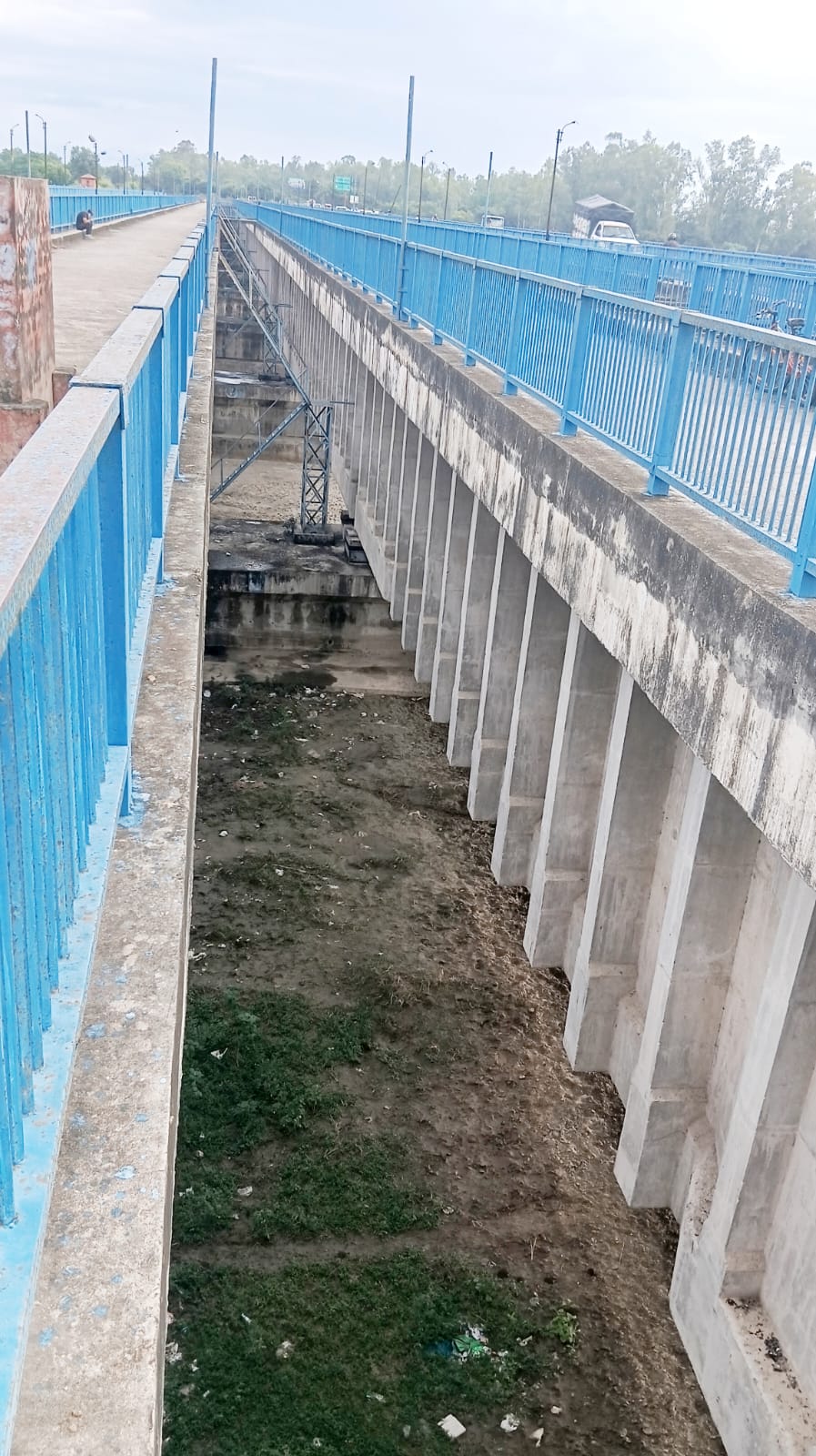By
Kaushal Kishore
Materials Engineer, Roorkee
The new Solani aqueduct on Ganges canal Roorkee was built with prestressed concrete which allows for longer spans and a simple more robust design compared to old bricks, lime- surkhi mortar masonry arches of the old aqueduct, in which 8.5 crores bricks were used, while iron railing used in the sides of two lanes were imported from England. This is interesting to note that materials bringing those days on ship from England to Indian ports take 6-10 weeks via the Suez canal or 3 to 6 months via the longer Cape of Good Hope. Calculate in it also time taken on road from Indian ports to Roorkee.
After retirement from University of now IIT Roorkee I joined M/S Roffe Construction Chemicals Pvt.Ltdd, Mumbai as it’s Chief Concrete Technologists afterwards I became it’s one of the Director.

AQUEDUCT picture taken on 7/10/2025
For the contractor of above aqueduct I designed M-40 grade of concrete with Roffe superpladticizer. Those interested may read my paper by visiting Google site and log in; Civil engineering portal The Ganges canal by Kaushal Kishore.
I had designed numerous concrete mix design almost all cements of India in this I find Utra Tech cement as one of best cement OPC and PPC both With Ultratech cement I had designed numerous concrete mixes from ordinary strength to M-80 grade concrete, self compacting concrete, shot crete concrete, fibre reinforced concrete, fly ash concrete and more There is life after retirement and after retirement I worked for 30 year’s which includes in free time working in home research and testing laboratory and numerous construction sites visits almost all India and outside India. At my age of 92 years I still work for 12 hours daily.
I had never worked for money. In spite of doing so gigantic work what to say about car I even do not have 2 wheeler not any of my house not a single inch of land in this world only pension from IIT Roorkee and few clothes

























its good one .. i like it.. n learnt alot..
ya its so nice to have informations………
every have to learn
mind blowing
Very good note regarding the Engineering, also knowledgeble too.Thank you for providing such paper on site
Hello everybody, my name is Damion, and I’m glad to join your conmunity,
and wish to assist as far as possible.
I’m feeling that, I’m entering a new world.
Hay, Iam Jayasankar from Kerala, and Iam very happy to join this
civil engineering work is essential, without this field we cannot develop a world
I AM VERY HAPPY TO JOIN
truly motivating for civil engg. students like me….
a good website for future civil engineers like me……..
william rodrigues from cochin kerala. I thank you for such information regarding
civil engineering. And also wish to have other information dealing with materials
used in construction. Viz steel and chemical used in cement concrete.
thank you
CIVIL ENGINEER GIVES COUNTRY ITS ON LOOK WITHOUT IT A COUNTRY CANNOT RUN
please send more details
Expressing the meaning – “Being a Civil Engineer what it means to the rest of the world as well as our responsibility towards them.”
Really nice.. It helps to the future civil engg students..
nice one dude….
I am a civil engineer graduated from bangladesh university of engineering & technology
in the year 1988.
I am now working as a consulting engineer in various foreign aided projects in Bangladesh.
It’s a nice website.